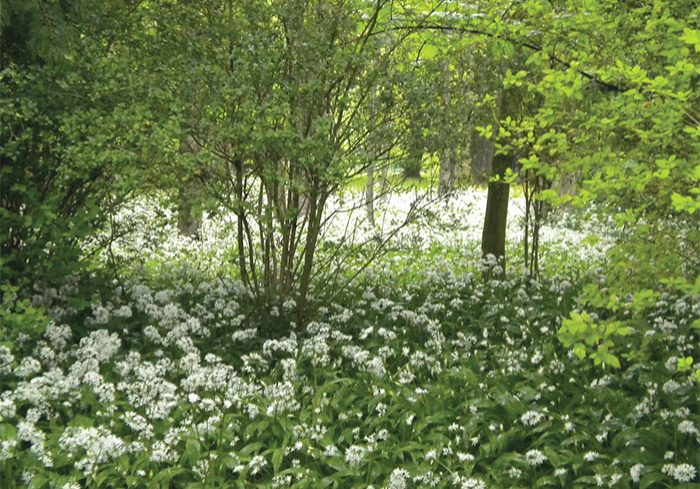
I’ve got a Little List | Gardening with Geoff Moss
by Geoff Moss
Gardener’s Diary with Geoff Moss
“The only moss you want in the garden”
Spring is on its way! So we can all come out of hibernation, shake off the horrible weather and look forward to the lighter nights. Obviously we busy gardeners have not been hibernating but carefully organising and re-structuring our gardens over the winter ready for this time of year which can proveto be one of the busiest of the year.
At this time we are feeling fired up with the coming of warmer weather and longer days so there are many tasks we feel we can do but we should focus on the items that need doing which is where our lists that we made towards the end of summer last year come in really handy. Now for those readers that are new to my column and are thinking ‘What lists?’ here is a quick recap of what I mean.
Start making a note of as much information as you can; what is looking good, what doesn’t look good, what needs repairing, where is the colour in the garden, what features or fixtures make up the garden (e.g. lawn, patio, shrub border, rockery etc), what is overgrown, what is in good shape.
These are a few examples of what you can make a note of but there is much more depending on your garden.
Next, make an additional list of what needs sorting out in the different parts or features of the garden. This could be pruning, weeding, crowded plants, no colour, repairs to paths, walls etc, lawn shape, murky pond, or many other issues that could that could be making your garden less enjoyable.
These lists do not have to be exhaustive at the moment as there will be more to add throughout the year just as long as there is enough to work on for now.
At this time we are feeling fired up with the coming of warmer weather.
The next stage is to start ordering these tasks into times of year they can be done.
If you are an experienced gardener you may be able to do this. However if you are not sure or you are a novice gardener then do not worry. For those of you who are not sure what can be done when, for any reason, I always do a list of appropriate tasks for the time of year in each edition of Northern Life.
For this edition check the list opposite for the type of jobs that can be done. Once you have an idea of what can be done at this time you can choose jobs according to the time you have available and leave the other tasks for another time. For those readers who already follow my column, use this recap to jog your memory for adding tasks to your list. This is particularly important as we are moving into a new season and there are many different tasks that need doing but we have just had autumn and winter where we will have got through a few or many items on our lists we previously made.
Now then, as well as using our management lists we can also look at the time of year for how to tackle the garden as this is a great preparation time to build on the organising we carried out in winter but also start getting the garden looking its best for spring and the coming season.
So this is a particularly good time for moving plants – mainly small shrubs and any size of perennial – which means we should look around the garden and where we have altered structures in the garden such as paths, retaining walls, border shapes and edges or the actual layout. There may be plants that are now badly placed or are just too close together. This is a great time to move these badly placed plants into a new position, perhaps in the same border or maybe in another area of the garden and this will happen throughout the life of your garden so it’s worth getting to grips with this concept.
It is also particularly useful todevelop this skill for plants that are not well, as this could be due to position in terms of environment (wind, shade etc) or soil type not being right for the sickly plant. A move to a different position can (and has often proved for me in my gardens) make for a healthier and transformed plant. Now as always we will pause for breath after looking at gardening techniques, so let’s have a look at the top tips for this time of year.
Jobs to do: February/March
Plant trees and bare-root plants while there is still time
- Cut back any remaining dead stems on herbaceous plants that may have been left for winter interest or got missed
- Look out for wet areas or standing water and make a note ready for drier weather
- Carry out any remaining weeding particularly brambles and weeds with long tendrils or root systems before the start of the growing season
- Prune summer flowering shrubs e.g. buddleia, roses, kerria, pheasant berry and winter stem plants e.g. dogwood, white wash bramble, winter stem willow.
- Prune old stems and crossing stems of bush fruit e.g. blackcurrants, gooseberries etc.
- Dig B.O.M. into borders to give a springtime boost.
Next we can look at where we can gain knowledge and ideas for our own gardens. At this time of year it’s great to go walking in the surrounding areas or even further afield and this is where we can gain inspiration – from nature itself – as gardens are of course our own patch of nature that we decide how to control. So what better than to go out, get some fresh air and look around at all the fantastic possibilities that can be had in the garden? This could be the dappled shade of a woodland, the rugged scenery of a limestone pavement, or just the gentle tranquillity of our hedgerows and meadows. So get out there and enjoy the beauty of our countryside while you gather inspiration for your garden.
Now, just to finish off we will wrap up on our early spring tasks and take a look at what is coming for late spring. So early spring is a great time to finish off winter projects and start preparing for the coming season as well as carrying out tasks to get the borders into better shape before the rush of growth in late spring and early summer.
As for late spring, we will look at how to control the garden as the first flush of growth happens so that we don’t end up with a wilderness in the middle of summer. We will also discover techniques to carry out projects over the season and create a beautiful garden to enjoy in the – hopefully – warm and sunny summer weather, so in the meantime don’t forget to send me your thoughts on how it’s all going through the ‘contact us’ button on my website.






